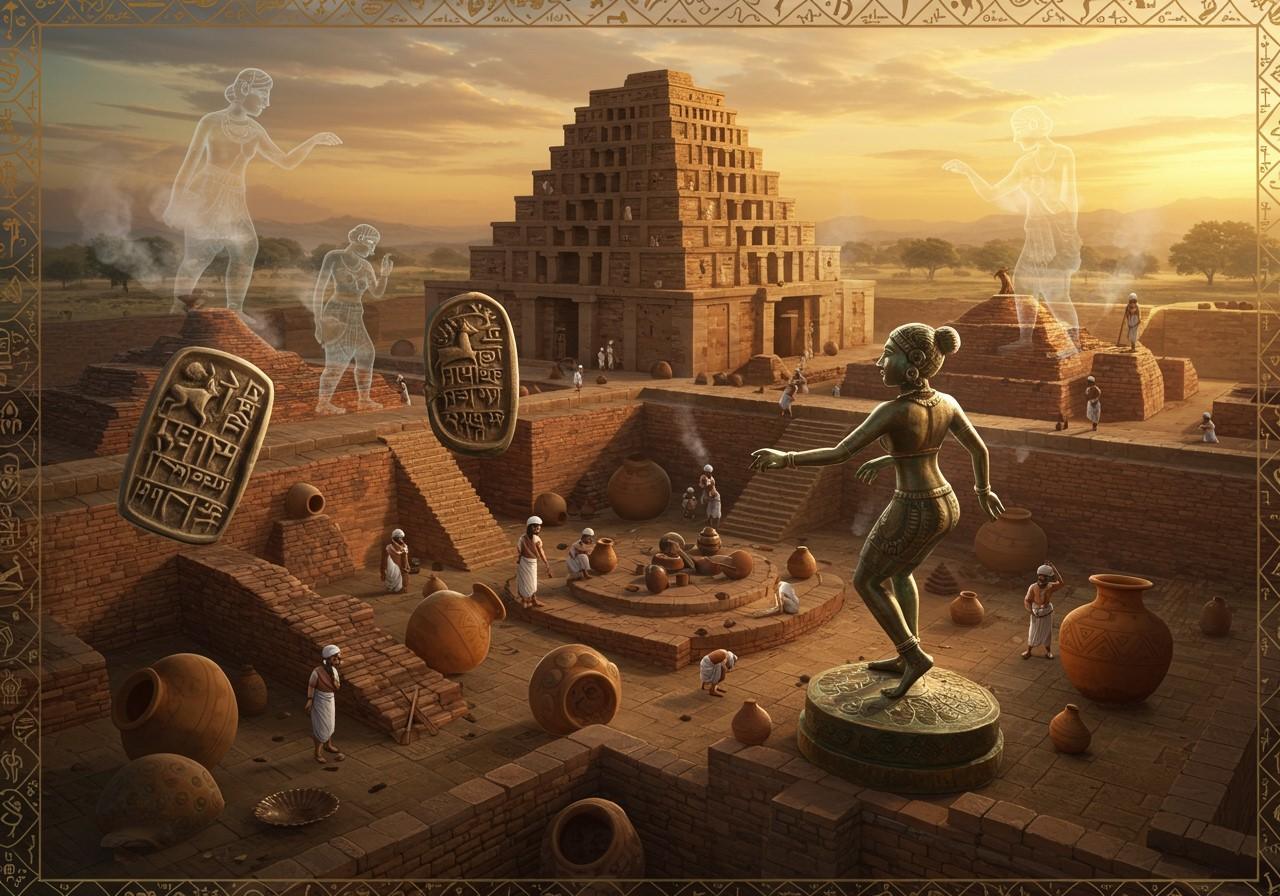Unraveling the Enigmas of Mohenjo-daro: Language, Civilization, and Cultural Legacy

Mohenjo-daro, a prominent urban center of the ancient Indus Valley Civilization, presents captivating enigmas surrounding its language and culture. Dating back to 2500 BCE, this UNESCO World Heritage site continues to intrigue archaeologists and historians. This revised exploration delves into the enigmatic aspects of Mohenjo-daro’s language, societal structure, and enduring cultural impact.
A Look Back at History
The Indus Valley Civilization flourished between 2500 BCE and 1900 BCE. Mohenjo-daro’s discovery in the 1920s by R.D. Banerji, and subsequent archaeological digs, have unveiled significant insights into the city’s meticulous urban planning and remarkable architecture. Situated along the Indus River in present-day Pakistan, the city showcased well-structured streets, sophisticated drainage systems, and the iconic Great Bath. Trade played a crucial role, with established connections to Mesopotamia. Around 1900 BCE, the civilization experienced a decline, with various theories attempting to explain its downfall. By 1300 BCE, many major cities were abandoned.
The Mystery of the Indus Script
The Indus script, the writing system of the Indus Valley Civilization, remains undeciphered to this day. Scholars propose potential links to Dravidian or proto-Dravidian languages. The inscriptions discovered on seals, pottery, and other artifacts are typically short, posing a challenge to decipherment efforts. Modern technologies and computational methods are being employed to decode the script. Unraveling this script is essential for gaining a deeper understanding of the civilization’s history, societal structure, and cultural practices. Research and discoveries continue to shed light on this intriguing puzzle.
Society and Culture of Mohenjo-daro
Evidence suggests a class system existed within Mohenjo-daro’s social structure. The Great Bath, a remarkable architectural feat, may have served religious or ritualistic purposes. The city’s advanced urban planning and infrastructure, featuring a grid layout and a complex drainage system, highlight the ingenuity of its inhabitants. Agriculture, craft production, and trade contributed to a thriving economy. Artifacts such as pottery, tools, and jewelry offer glimpses into the material culture of the Indus Valley people. Religious beliefs possibly included the veneration of mother goddess figures and animal deities. Comparing Mohenjo-daro to contemporary civilizations like Mesopotamia and Ancient Egypt reveals both similarities and differences.
Mohenjo-daro’s Enduring Legacy
The Indus Valley Civilization’s influence on subsequent cultures in South Asia is undeniable. Certain cultural practices, such as the use of bangles and specific motifs in art and architecture, have persisted through time. Mohenjo-daro holds a significant place in contemporary Indian and Pakistani culture, finding representation in literature, media, and academic discourse. Preserving this invaluable site presents challenges due to environmental factors and urban encroachment. International collaborations and organizations like UNESCO play a vital role in conservation efforts. Educational initiatives strive to raise awareness and understanding of this ancient civilization.
Addressing Common Questions about Mohenjo-daro
What makes Mohenjo-daro so important? Mohenjo-daro’s significance lies in its advanced urban planning, unique architecture, and the insights it offers into the Indus Valley Civilization’s social organization. It stands as a testament to human ingenuity in the ancient world.
What do we know about the people of Mohenjo-daro? Archaeological evidence reveals a structured society with specialized labor, a thriving economy based on agriculture, trade, and crafts, and potential religious practices centered around mother goddesses and animal deities.
What challenges does Mohenjo-daro face today? Preservation efforts are crucial due to environmental factors like erosion and urban encroachment. International collaborations and UNESCO’s involvement play a vital role in protecting this historical treasure.
How Poojn.in Connects You to Ancient Traditions
Poojn.in, India’s leading cultural goods and services store, bridges the gap between the ancient world and modern spiritual practices. We offer a wide selection of authentic products that resonate with the rich heritage of the Indus Valley Civilization. Explore our collection and discover:
- Sacred Malas: Just as beads and ornaments were significant in Mohenjo-daro, discover a variety of traditional malas for your spiritual practices. We offer high-quality Rudraksha, Tulsi, and other sacred wood malas, crafted with respect for tradition.
- Spiritual Statues and Idols: Connect with the divine through our collection of meticulously crafted statues and idols, representing deities revered since ancient times, including Lord Shiva.
- Incense and Dhoop: Enhance your spiritual atmosphere with traditional incense and dhoop, reminiscent of the aromatic rituals practiced in ancient civilizations.
At Poojn.in, we are committed to providing authentic and high-quality products that honor the traditions of the past. Visit us today and embark on a journey of cultural exploration.


